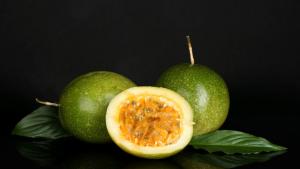The Importance of Cell Membrane in Plant and Animal Cells
Cell membrane, also known as plasma membrane, is a protective layer that surrounds the cells of both plants and animals. It is a crucial component of living organisms, as it separates the cell from its external environment and controls the movement of molecules in and out of the cell.
Structure of Cell Membrane
The cell membrane is made up of a double layer of phospholipids, which have hydrophilic (water-loving) heads and hydrophobic (water-fearing) tails. The heads face the outside and inside of the cell, while the tails form the interior of the membrane. Embedded within this lipid bilayer are proteins, carbohydrates, and cholesterol. The proteins serve various functions, including transport, communication, and recognition. The carbohydrates act as markers, allowing the cell to identify molecules outside of the cell. Cholesterol helps to stabilize the membrane and regulate its fluidity.
Functions of Cell Membrane
One of the primary functions of the cell membrane is to regulate the movement of molecules in and out of the cell. This selective permeability allows the cell to maintain its internal environment, even in the face of changing external conditions. Small molecules, such as oxygen and carbon dioxide, can pass through the membrane by simple diffusion, while larger molecules, such as proteins and sugars, require the help of transport proteins to cross the membrane.
The cell membrane also plays a role in communication and recognition. Some proteins, known as receptors, bind to specific molecules outside of the cell, triggering a response within the cell. Other proteins, called enzymes, catalyze chemical reactions within the cell. Carbohydrates on the surface of the membrane act as markers, allowing cells to identify other cells of the same or different species.
Differences between Plant and Animal Cell Membranes
While both plant and animal cells have cell membranes, there are some differences in their composition and function. Plant cells have an additional protective layer called the cell wall, which is made up of cellulose. Animal cells do not have a cell wall, but they do have cholesterol embedded in their cell membranes to help stabilize them.
Another difference is that plant cells have specialized channels called plasmodesmata, which connect adjacent cells and allow for direct communication and transport between them. Animal cells do not have plasmodesmata, but they do have gap junctions, which allow for communication between adjacent cells.
Conclusion
Cell membrane is a crucial component of both plant and animal cells. It protects the cell from its external environment, regulates the movement of molecules in and out of the cell, and plays a role in communication and recognition. Understanding the structure and function of the cell membrane is important for advancing our knowledge of biology and developing new medical treatments.

 how many times do yo...
how many times do yo... how many planted tre...
how many planted tre... how many pine trees ...
how many pine trees ... how many pecan trees...
how many pecan trees... how many plants comp...
how many plants comp... how many plants can ...
how many plants can ... how many plants and ...
how many plants and ... how many pepper plan...
how many pepper plan...
































